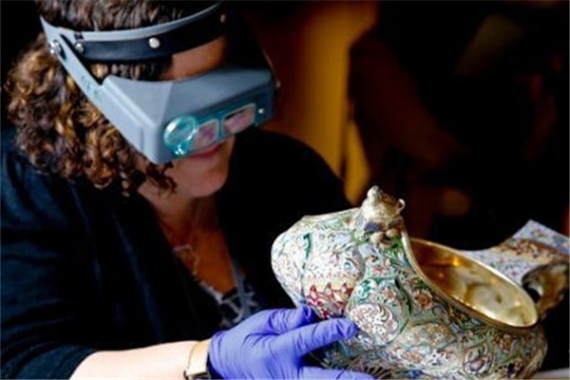
Some of the best Russian Royal art will soon be put on display at Beijing's Palace Museum. (Photo/CCTV.com)
Some of the best Russian Royal art will soon be put on display at Beijing's Palace Museum. Items on display include works by the late, renowned goldsmith Karl Gustavovich Faberge with the most stellar pieces being dozens of Easter Eggs he made for the Tsar.
The exhibition, which will be officially opened next Saturday, is the fruit of collaboration between the Palace Museum and the U.S.'s Virginia Museum of Fine Arts. More than 200 royal treasures are on loan from the Virginia Museum, and will be on display for three months at the Palace Museum. Visitors can get a glimpse at how luxurious royal jewelry art was a century ago.
"This is not the first time that our museum has hosted a foreign exhibition. Since 2004, we've held foreign exhibitions, like those from France and Russia," said Song Haiyang from Exhibition Dept. of Palace Museum.
"This time around, the exhibits are from the U.S. This is probably the first exhibition on loan from the U.S."
Karl Gustavovich Faberge was born in 1846 and died in 1920. He is the world's most renowned goldsmith from Russia. His most outstanding achievement was 50 Easter Eggs he made for the Tsar. He was honored by the Tsar as an exclusive jewelry artist for the court. As well as the Easter Eggs, the exhibition will also display diamond brooches and photo frames.
"Visitors come to here to see, first, the Easter Eggs, second, the scale of luxury that is Russian royal art," said Song.
The egg shaped art pieces are made out of gems and enamel, and ornated using precious metals. They are regarded as the classic of jewel art. Karl Gustavovich Faberge, the person who gave birth to them, has now become a synonym of Russian royal treasures. Visitors who hold tickets for the Palace Museum can see the exhibition for free.


















































